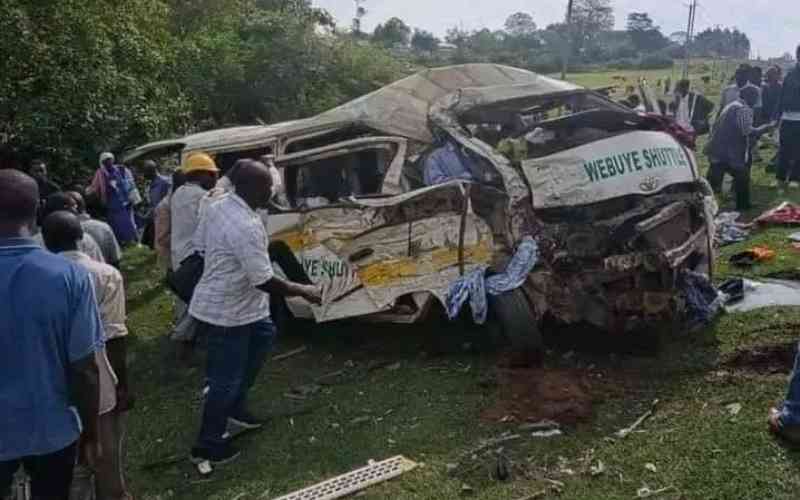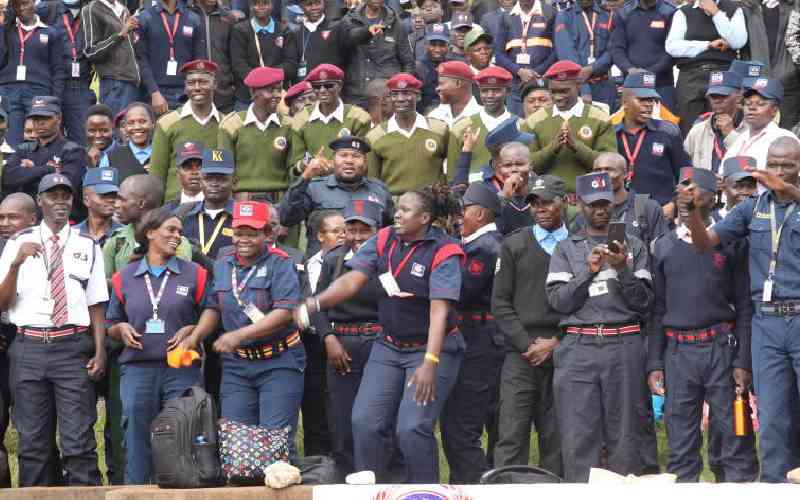By Tony Ngare
In college I remember taking a unit called Development Studies. If my memory serves me right, it is a branch of social science that addresses issues of concern to developing countries especially social and economic development.
But you need not take intimidating sounding academic courses to realise where we Kenyans are on the global food chain. A simple drive along any of our highways will surely satisfy your curiosity. Regardless of your shags, if it is within 200 kilometres of where you eke out your living then you must have come face to face with our struggling economy.
And I am not referring to the annoying power rationing or the ever-present potholes.
To complain about potholes on the Kenyan roads would be unpatriotic, for they have become part of us. It’s like backstabbing a brother.
Have you ever thought of taking count of the number of vehicles you encounter broken down on any highway? To say the statistics are horrifying would be an extreme understatement!
On a recent trip to Nakuru, we took it upon ourselves to undertake some research.
We enumerated (how often do I get to use that term here?) the number of broken down vehicles on the way.
Now before you accuse us of data collection incompetence, let me assure you a puncture did not amount to a case study. Only scenes where there were stationary cars, clearly visible oily overalls and distraught looking men and women helping themselves to some bananas or an assortment of snacks.
After fuelling at a petrol station at Kangemi, we set off for Nakuru. My friend Brian took the wheel while Sam and I were the self-appointed enumerators — took pencil and paper in hand.
Slightly past Uthiru Police Station we gleefully spotted our first case study of the day. It was a pickup loaded with fresh cabbages by the road.
It was slightly after 9am and assuming that the cabbages were supposed to be in Nairobi by day break, you can imagine the anguish of the concerned businessmen.
Men under lorries
At Rironi, we encountered two lorries parked dangerously by the roadside. They both had men underneath working frantically to ensure the transit goods got to their destination.
At the Mai Mahiu turnoff, we had a brief disagreement on which road to use, while Sam favoured the Mai Mahiu route believing we could encounter many broken down lorries, I postulated that this would essentially skew our study towards heavy commercial vehicles only, for they are the ones that routinely use the road.
Stay informed. Subscribe to our newsletter
I finally managed to convince the crew and we stuck with the main highway. By the time we were getting to Kwa Mbira and Gichiengo we had counted 19 broken down cars. Further on towards Kimende the figures kept escalating and by the time we got to Viewpoint we had witnessed 25 incidences.
Between Naivasha and Gilgil the figures dropped drastically to the point of making us contemplate abandoning our study and heading back to Kikopey for nyama choma. However, just past Gilgil the vehicles, especially those heading towards Nakuru, were beginning to pack up in large numbers.
High incident tally
By the time we were approaching the once famous Stem Hotel, the tally was well into the 30s.
The final call — incident number 37 — was right outside State House Nakuru where an utterly frightened motorist was explaining to the security officers why his car chose to breakdown at the all important gates.
Fine, they say a vehicle can break down any time, but my mechanic says a well-maintained vehicle is a well-behaved car.
This just goes a long way to illustrate that as a society we are struggling to cope with the basics in life yet we still crave luxuries.
—[email protected]
 The Standard Group Plc is a
multi-media organization with investments in media platforms spanning newspaper
print operations, television, radio broadcasting, digital and online services. The
Standard Group is recognized as a leading multi-media house in Kenya with a key
influence in matters of national and international interest.
The Standard Group Plc is a
multi-media organization with investments in media platforms spanning newspaper
print operations, television, radio broadcasting, digital and online services. The
Standard Group is recognized as a leading multi-media house in Kenya with a key
influence in matters of national and international interest.
 The Standard Group Plc is a
multi-media organization with investments in media platforms spanning newspaper
print operations, television, radio broadcasting, digital and online services. The
Standard Group is recognized as a leading multi-media house in Kenya with a key
influence in matters of national and international interest.
The Standard Group Plc is a
multi-media organization with investments in media platforms spanning newspaper
print operations, television, radio broadcasting, digital and online services. The
Standard Group is recognized as a leading multi-media house in Kenya with a key
influence in matters of national and international interest.







